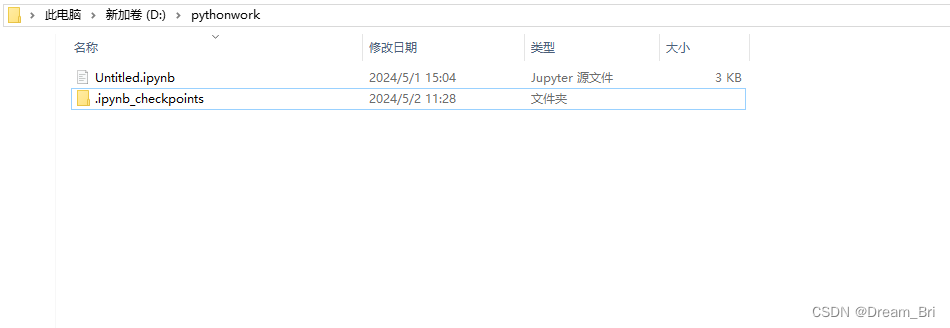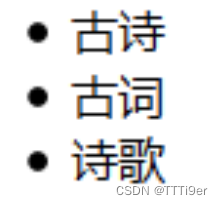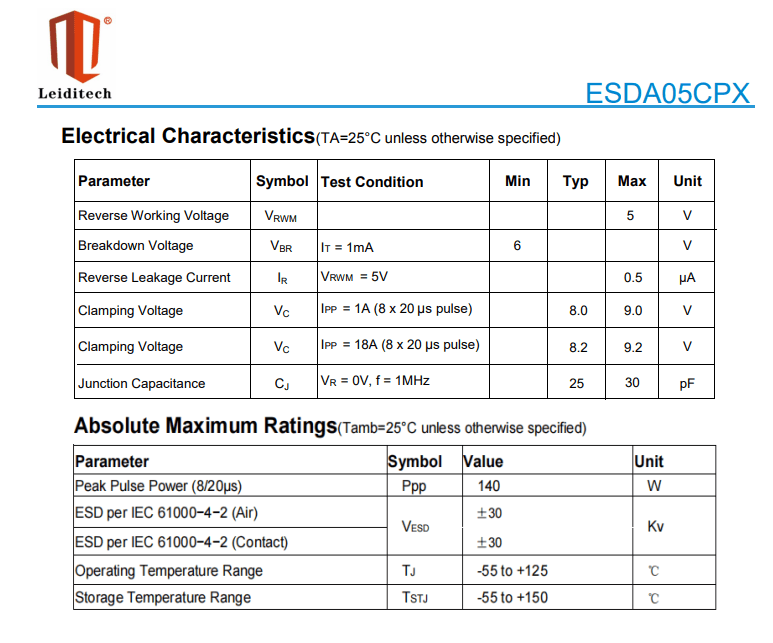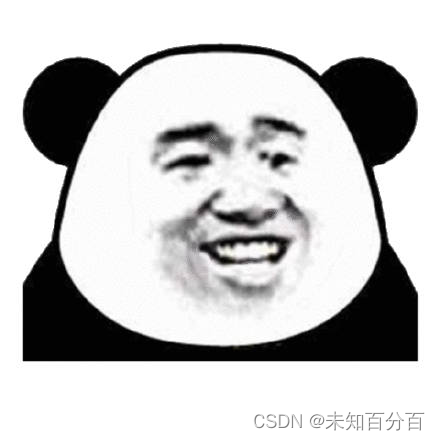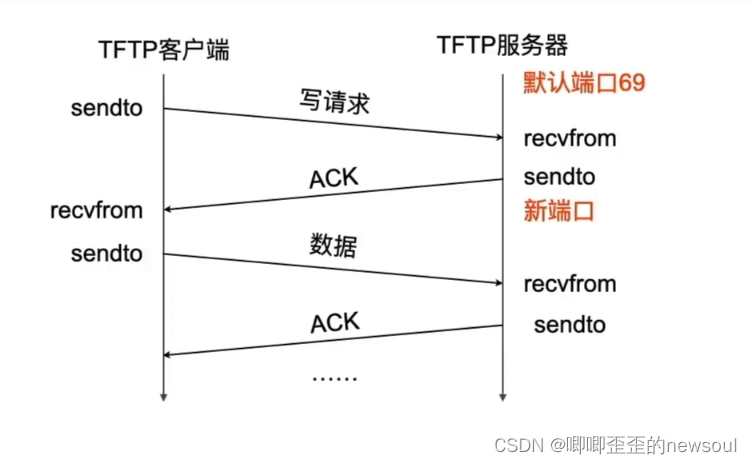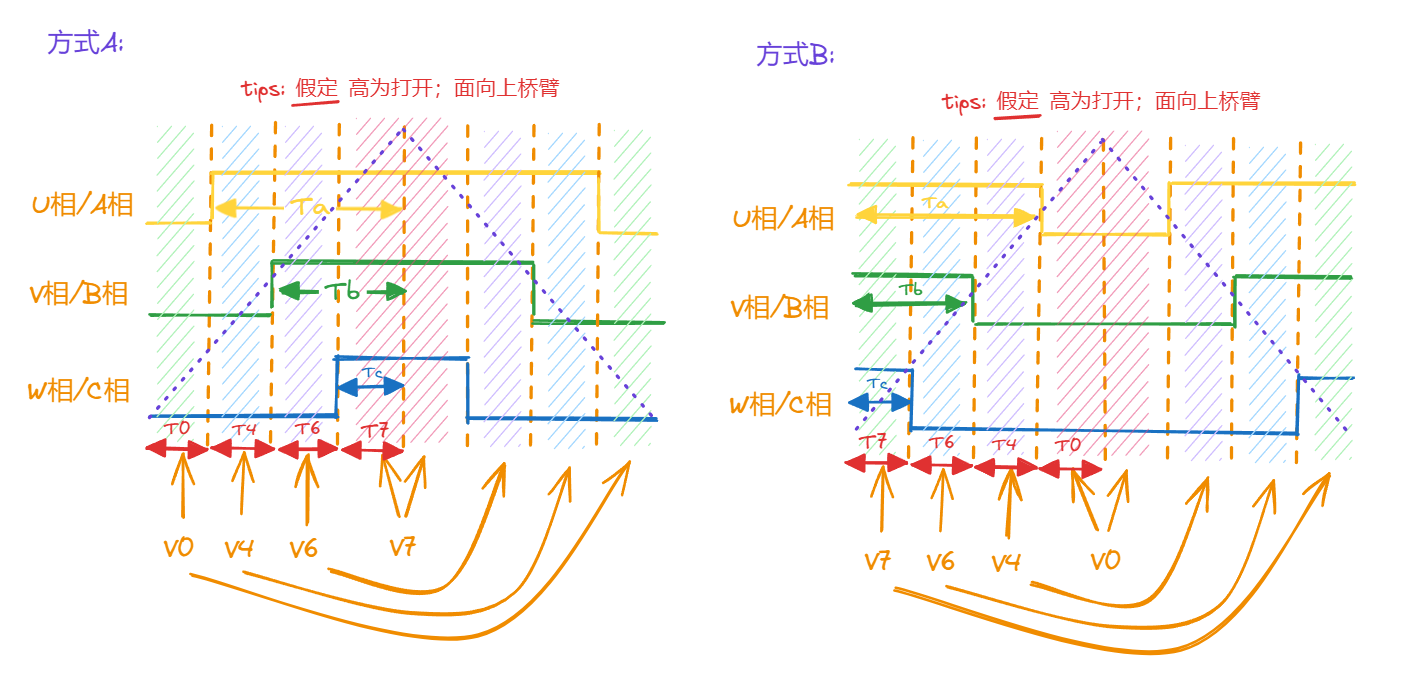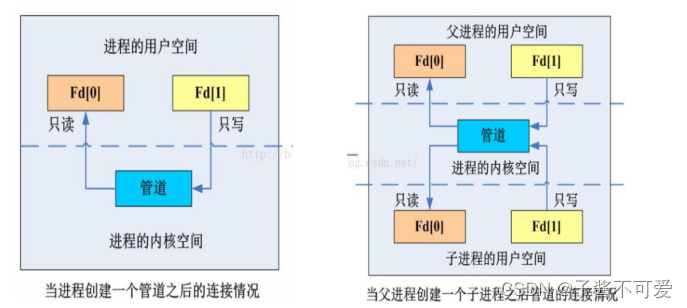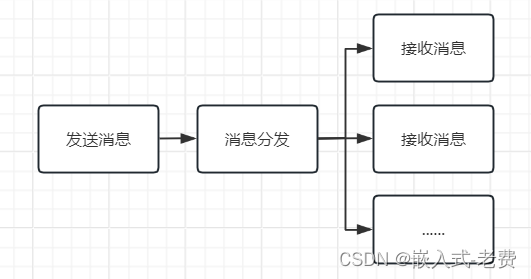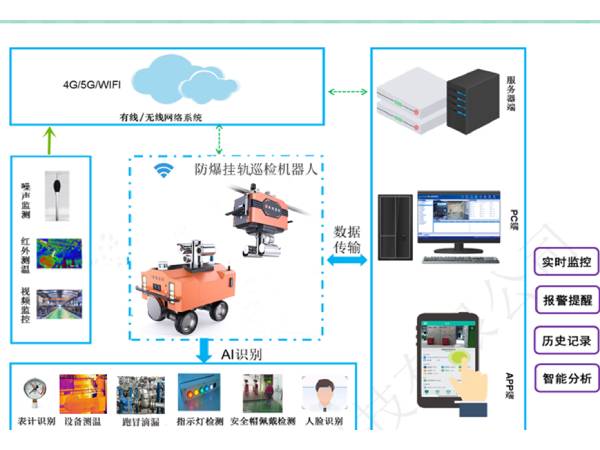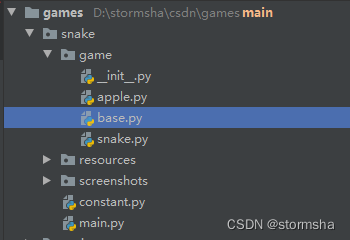A TableTennisPlayer

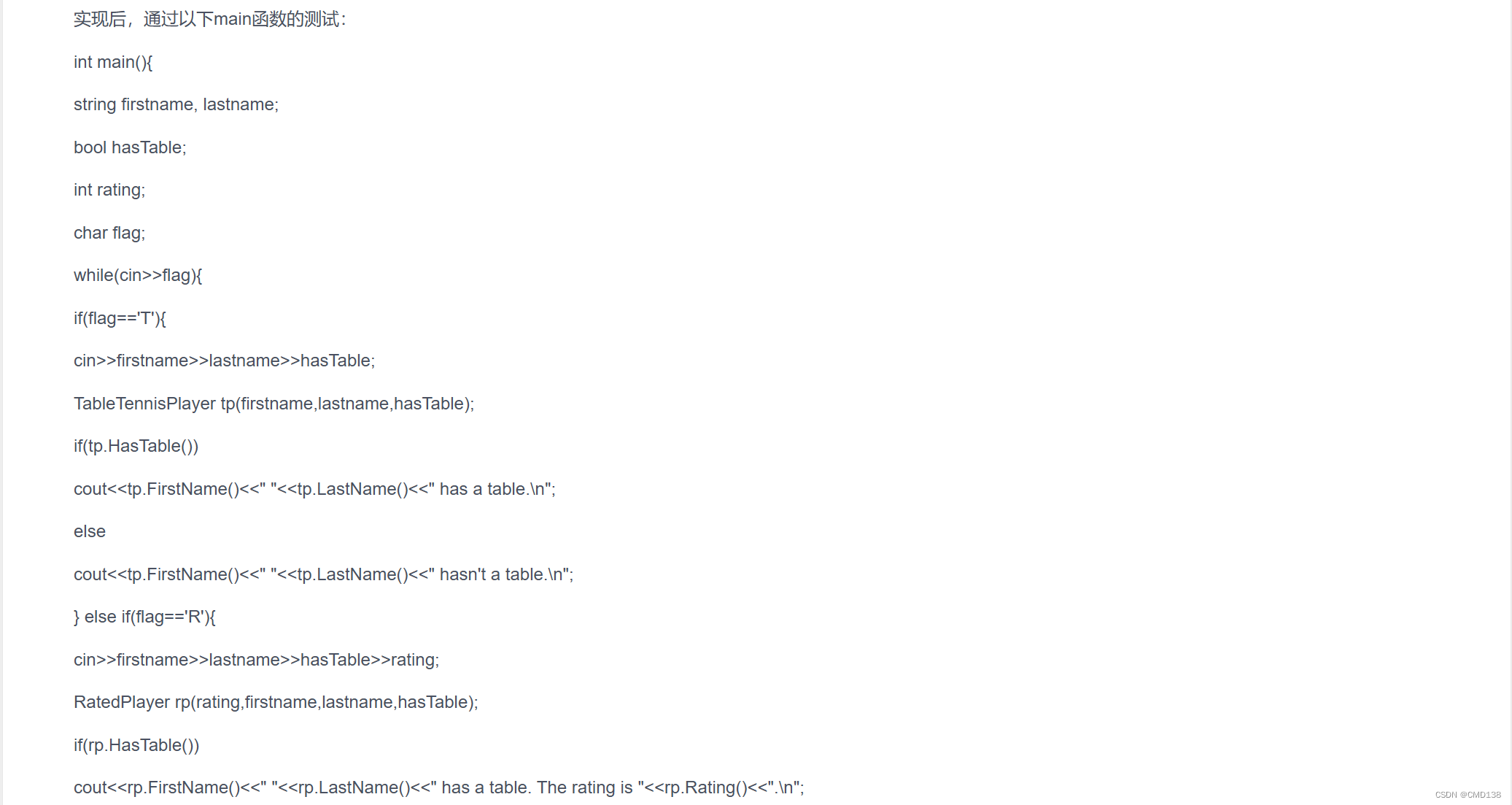

答案:
#include<iostream>
#include<cstring>
using namespace std;
class TableTennisPlayer{
private:
string firstname;
string lastname;
bool hasTable;
public:
TableTennisPlayer(const string &, const string &, bool);
string FirstName() const;
string LastName() const;
bool HasTable() const;
};
TableTennisPlayer::TableTennisPlayer(const string & fn, const string & ln, bool h)
{
firstname=fn;
lastname=ln;
hasTable=h;
}
string TableTennisPlayer::FirstName()const{
return firstname;
}
string TableTennisPlayer::LastName()const{
return lastname;
}
bool TableTennisPlayer::HasTable()const{
return hasTable;
}
class RatedPlayer :public TableTennisPlayer{
private:
int rating;
public:
RatedPlayer(int,const string &, const string &, bool);
int Rating() const;
};
RatedPlayer::RatedPlayer(int r,const string & fn, const string & ln, bool h):TableTennisPlayer(fn,ln,h)
{
rating=r;
}
int RatedPlayer::Rating() const
{
return rating;
}
int main(){
string firstname, lastname;
bool hasTable;
int rating;
char flag;
while(cin>>flag){
if(flag=='T'){
cin>>firstname>>lastname>>hasTable;
TableTennisPlayer tp(firstname,lastname,hasTable);
if(tp.HasTable())
cout<<tp.FirstName()<<" "<<tp.LastName()<<" has a table.\n";
else
cout<<tp.FirstName()<<" "<<tp.LastName()<<" hasn't a table.\n";
} else if(flag=='R'){
cin>>firstname>>lastname>>hasTable>>rating;
RatedPlayer rp(rating,firstname,lastname,hasTable);
if(rp.HasTable())
cout<<rp.FirstName()<<" "<<rp.LastName()<<" has a table. The rating is "<<rp.Rating()<<".\n";
else
cout<<rp.FirstName()<<" "<<rp.LastName()<<" hasn't a table. The rating is "<<rp.Rating()<<".\n";
}
}
return 0;
}
重要知识点:
·继承相关知识;
·派生类对象构造函数先调用父类构造函数,以及如何实现。
B Person和Student
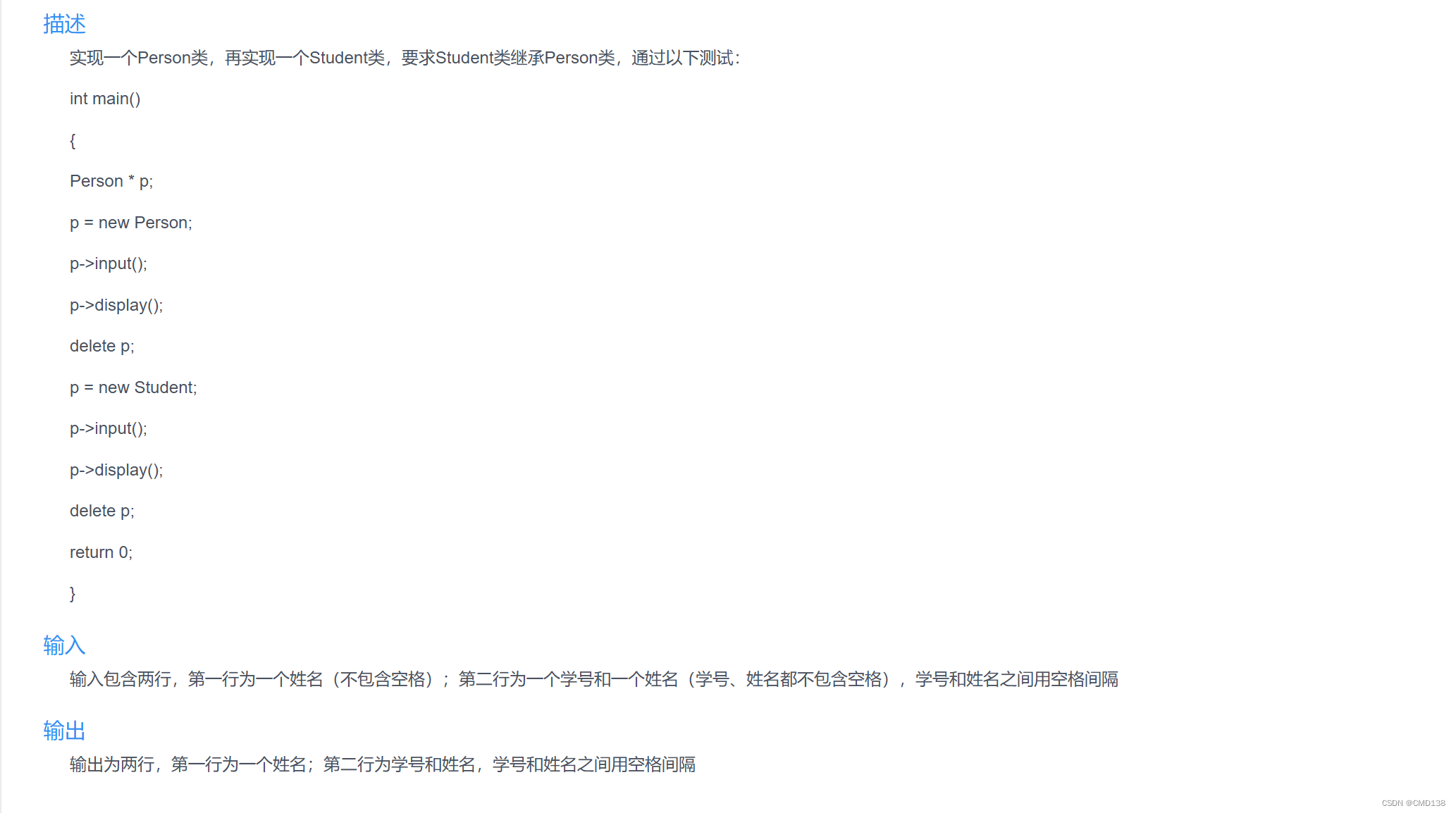

答案:
#include<iostream>
#include<cstring>
using namespace std;
class Person{
private:
string name;
public:
virtual void input();
virtual void display();
};
void Person::input()
{
cin>>name;
}
void Person::display()
{
cout<<name<<endl;
}
class Student:public Person{
private:
string id;
public:
void input();
void display();
};
void Student::input()
{
cin>>id;
Person::input();
}
void Student::display()
{
cout<<id<<" ";
Person::display();
}
int main(){
Person * p;
p = new Person;
p->input();
p->display();
delete p;
p = new Student;
p->input();
p->display();
delete p;
return 0;
}
重要知识点:
·多态(主函数中体现)
·虚函数的定义与在子类中的实现(virtual关键字)
·赋值兼容规则是指在公有继承情况下,对于某些场合,一个派生类的对象可以
作为基类对象来使用。即:公有派生类的对象可以赋值给一个基类对象,并自
动转换为基类类型。 但基类对象只能“看到”其所替代的派生类对象中的基类部分。
C 图书商品
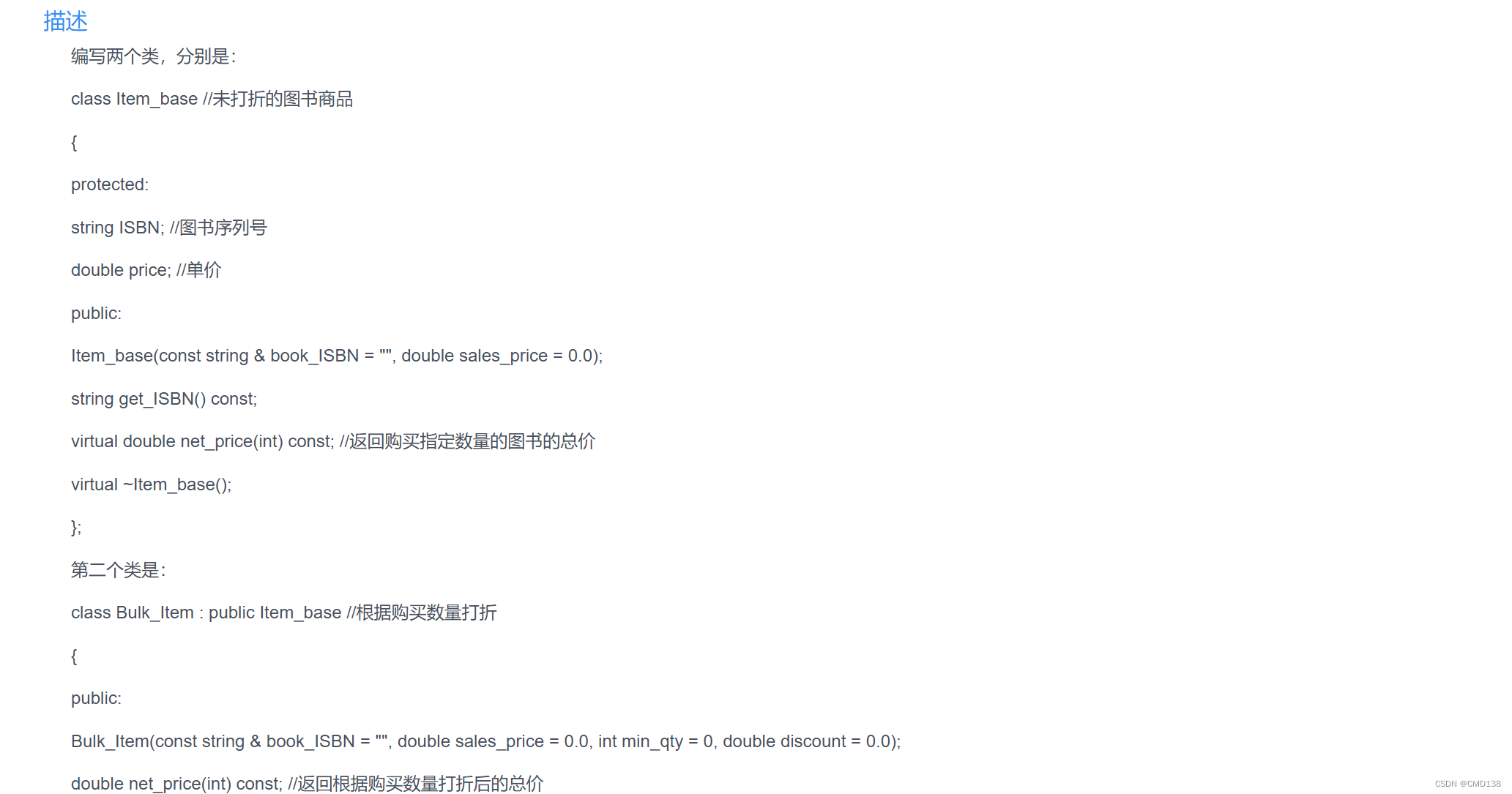
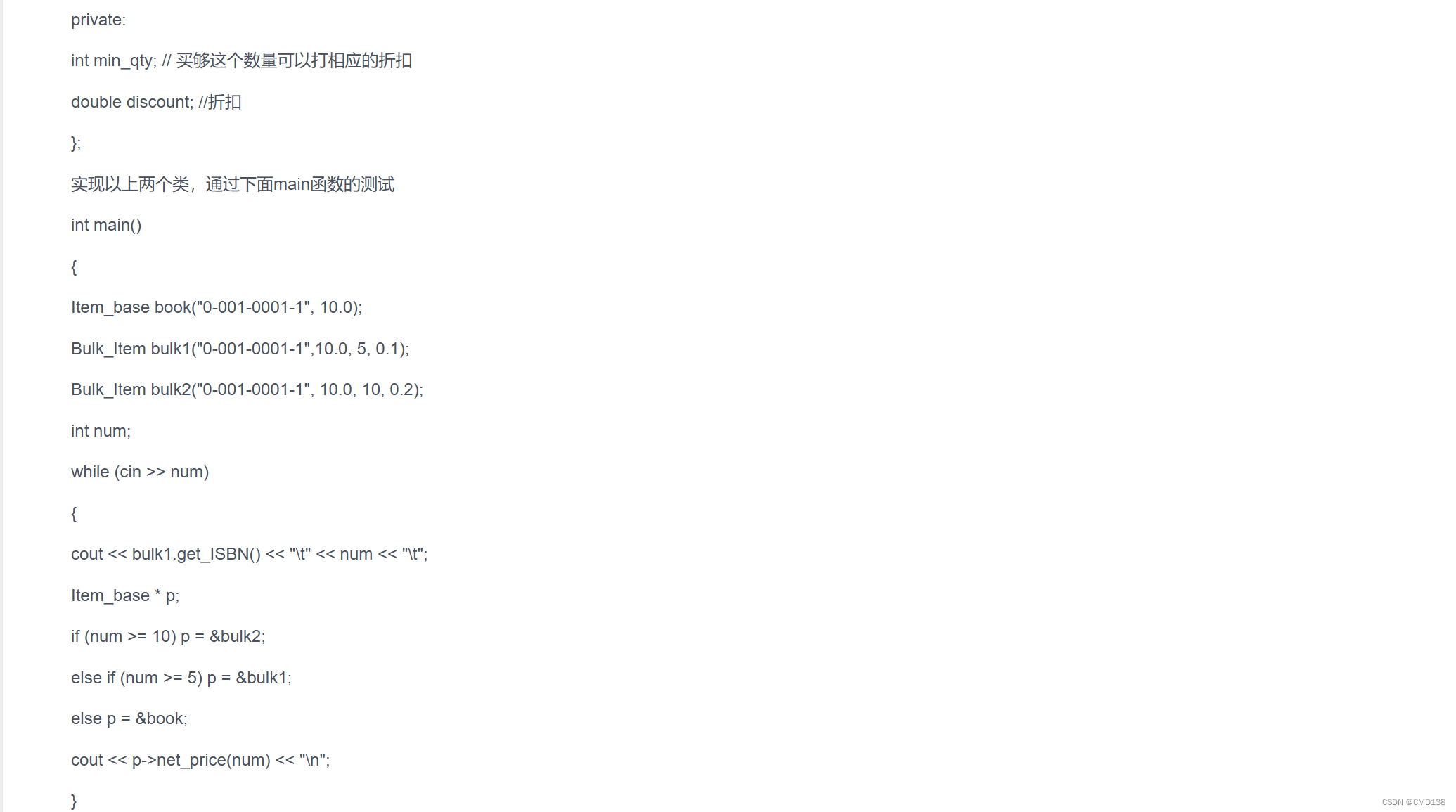

答案:
#include<iostream>
using namespace std;
class Item_base //未打折的图书商品
{
protected:
string ISBN; //图书序列号
double price; //单价
public:
Item_base(const string & book_ISBN = "", double sales_price = 0.0);
string get_ISBN() const;
virtual double net_price(int) const; //返回购买指定数量的图书的总价
virtual ~Item_base();
};
Item_base::Item_base(const string & book_ISBN, double sales_price)
{
ISBN=book_ISBN;
price=sales_price;
}
string Item_base::get_ISBN()const
{
return ISBN;
}
double Item_base::net_price(int n) const
{
return price*n;
}
Item_base::~Item_base(){
}
class Bulk_Item : public Item_base //根据购买数量打折
{
public:
Bulk_Item(const string & book_ISBN = "", double sales_price = 0.0, int min_qty = 0, double discount = 0.0);
double net_price(int) const; //返回根据购买数量打折后的总价
private:
int min_qty; // 买够这个数量可以打相应的折扣
double discount; //折扣
};
Bulk_Item::Bulk_Item(const string & book_ISBN, double sales_price, int min_qty, double discount):Item_base(book_ISBN,sales_price)
{
this->min_qty=min_qty;
this->discount=discount;
}
double Bulk_Item::net_price(int n)const
{
return price*n*(1.0-discount);
}
int main()
{
Item_base book("0-001-0001-1", 10.0);
Bulk_Item bulk1("0-001-0001-1",10.0, 5, 0.1);
Bulk_Item bulk2("0-001-0001-1", 10.0, 10, 0.2);
int num;
while (cin >> num)
{
cout << bulk1.get_ISBN() << "\t" << num << "\t";
Item_base * p;
if (num >= 10) p = &bulk2;
else if (num >= 5) p = &bulk1;
else p = &book;
cout << p->net_price(num) << "\n";
}
return 0;
}
重要知识点
·虚函数:
(1)只有类的普通成员函数或析构函数才能声明为虚函数。
(2)基类中的虚函数可以在派生类中被重新定义,但重新定义时必须与基类中的函数原型完全相同(同名覆盖),且无论是否用virtual修饰,系统都将其视为虚函数(建议加上virtual)。
(3)当一个类的公有成员函数声明为虚函数,且在其公有派生类中被同名覆盖时:
当用基类指针(或引用)指向这个派生类对象,并用该指针调用该函数时,系统自动用派生类中
的同名函数。
即:当用基类指针(或引用)指向派生类对象,并用该指针调用该函数时,系统会在程序运行中根据所指向对象的不同,自动选择执行当前指向对象所属类的成员函数,从而实现了运行时的多
态性。
(5)静态成员函数不能声明为虚函数。因为静态成员函数不属于某一个对象,没
有多态性的特征。
(6)构造函数不能是虚函数。
(7)析构函数可以是虚函数,且往往被声明为虚函数。
D Vehicle类
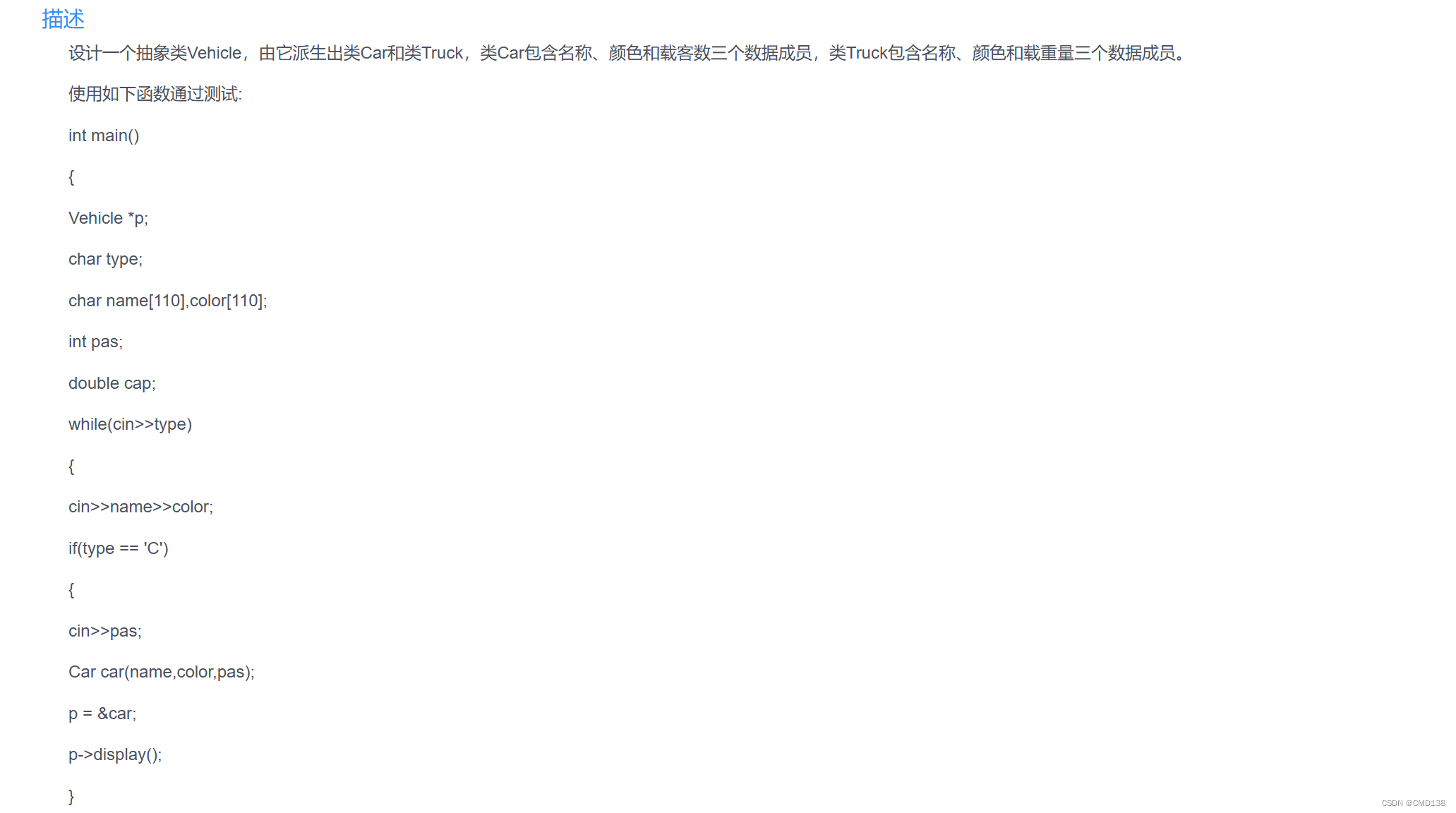
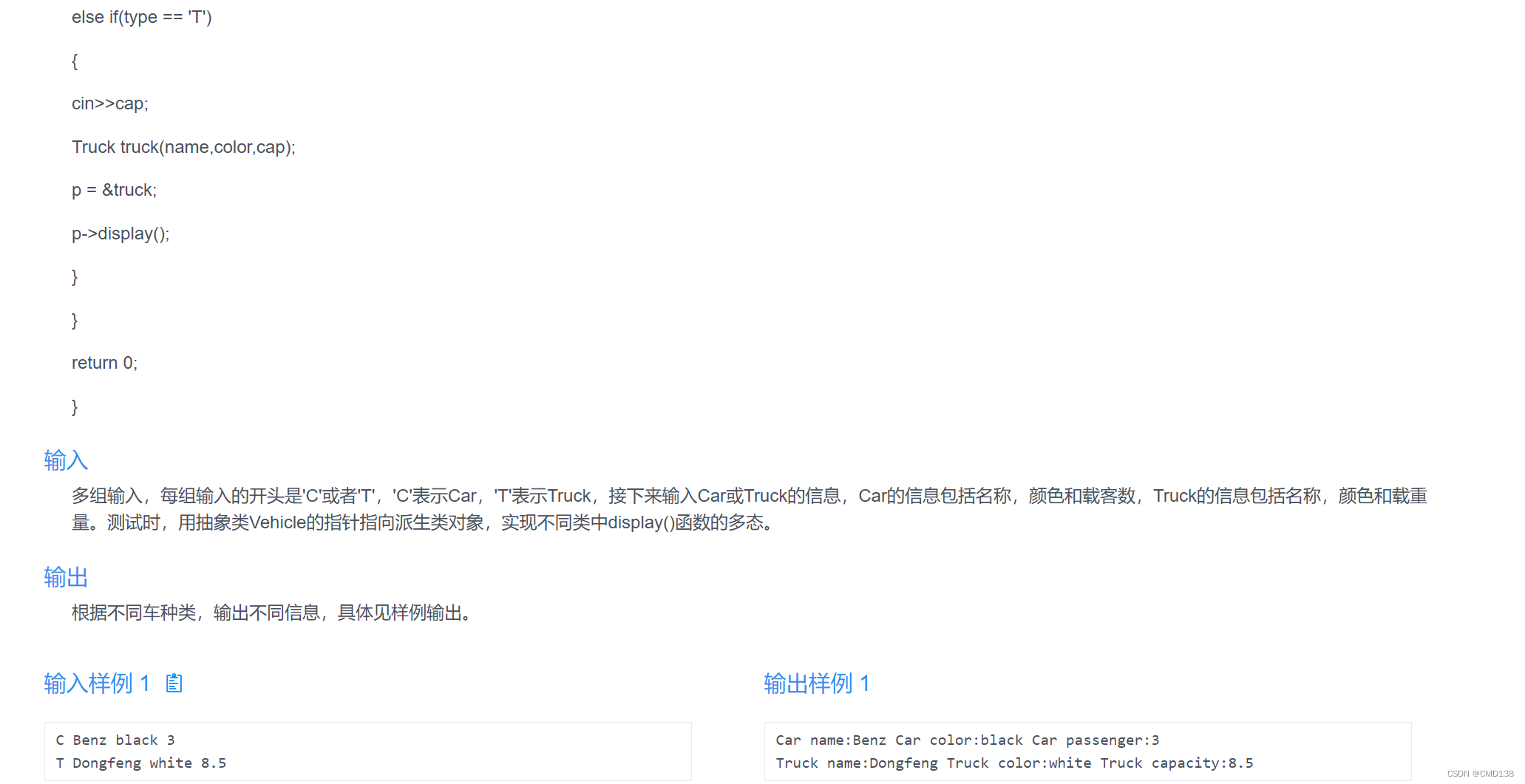

答案:
#include<iostream>
using namespace std;
class Vehicle{
protected:
string name;
string color;
public:
Vehicle(string ,string);
virtual void display()=0;
};
Vehicle::Vehicle(string n,string c)
{
name=n;
color=c;
}
class Car:public Vehicle{
private:
int passenger;
public:
Car(string,string,int);
void display();
};
Car::Car(string n,string c,int num):Vehicle(n,c)
{
passenger=num;
}
void Car::display()
{
cout<<"Car name:"<<name<<" Car color:"<<color<<" Car passenger:"<<passenger<<endl;
}
class Truck:public Vehicle{
private:
double capacity;
public:
Truck(string,string,double);
void display();
};
Truck::Truck(string n,string c,double m):Vehicle(n,c)
{
capacity=m;
}
void Truck::display()
{
cout<<"Truck name:"<<name<<" Truck color:"<<color<<" Truck capacity:"<<capacity<<endl;
}
int main()
{
Vehicle *p;
char type;
char name[110],color[110];
int pas;
double cap;
while(cin>>type)
{
cin>>name>>color;
if(type == 'C')
{
cin>>pas;
Car car(name,color,pas);
p = &car;
p->display();
}
else if(type == 'T')
{
cin>>cap;
Truck truck(name,color,cap);
p = &truck;
p->display();
}
}
return 0;
}
重要知识点:
·纯虚函数:
在定义一个表达抽象概念的基类时,有时可能会无法给出某些成员
函数的具体实现。这时,就可以将这些函数声明为纯虚函数。
virtual 类型 函数名(参数表)=0 ;
即纯虚函数就是在基类中声明为虚函数,但未给出具体函数定义体的函数
在各派生类中对该虚函数进行同名覆盖(即重写)。
·抽象类:
类体内声明了纯虚函数的类,称为抽象类。
抽象类的主要作用:以此类为基类建立的一个类族具有一组公共的接口(即公
有成员函数),将它们定义为纯虚函数,使它们能够更有效地发挥多态特性。
抽象类声明了一族派生类的共同接口,而接口的完整实现,即纯虚函数的函数
体,要由派生类自己定义。
·使用纯虚函数与抽象类的注意事项:
(1)抽象类只能用作基类来派生出新类,不能声明抽象类的对象,但可以声明指向抽象类的指针
变量或引用变量。
(2)抽象类中可以有多个纯虚函数。
(3)抽象类中也可以定义其他非纯虚函数。
(4)抽象类派生出新类之后,如果在派生类中没有重新定义基类中的纯虚函数,则必须再将该虚
函数继续声明为纯虚函数,此时,这个派生类仍然是一个抽象类;
(5)在一个复杂的类继承结构中,越上层的类抽象程度就越高,有时甚至无法给出某些成员函数
的具体实现。
(6)引入抽象类的目的主要是为了能将相关类组织在一个类继承结构中,并通过抽象类来为这些
相关类提供统一的操作接口。
E 表面积和体积



答案:
#include<iostream>
#include<iomanip>
#include<cmath>
using namespace std;
const double pi = acos(-1);
class Shape {
public:
Shape() {}
virtual double area() = 0;
virtual void input() = 0;
virtual double volume() = 0;
virtual ~Shape() {}
};
class Cylinder:public Shape
{
private:
int r;
int h;
public:
double area();
void input();
double volume();
};
double Cylinder::area()
{
return pi*r*r*2+2*pi*r*h;
}
void Cylinder::input()
{
cin>>r>>h;
}
double Cylinder::volume()
{
return pi*r*r*h;
}
class Cuboid:public Shape
{
private:
int a;
int b;
int c;
public:
double area();
void input();
double volume();
};
double Cuboid::area()
{
return 2*a*b+2*a*c+2*b*c;
}
void Cuboid::input()
{
cin>>a>>b>>c;
}
double Cuboid::volume()
{
return a*b*c;
}
class Ball:public Shape
{
private:
int r;
public:
double area();
void input();
double volume();
};
double Ball::area()
{
return 4.0*pi*r*r;
}
void Ball::input()
{
cin>>r;
}
double Ball::volume()
{
return (4.0/3.0)*pi*r*r*r;
}
void work(Shape *s) {
s->input();
cout << s->area() << " " << s->volume() << endl;
delete s;
}
int main() {
char c;
while (cin >> c) {
switch (c) {
case 'y':
work(new Cylinder());
break;
case 'c':
work(new Cuboid());
break;
case 'q':
work(new Ball());
break;
default:
break;
}
}
return 0;
}
重要知识点:
同上
